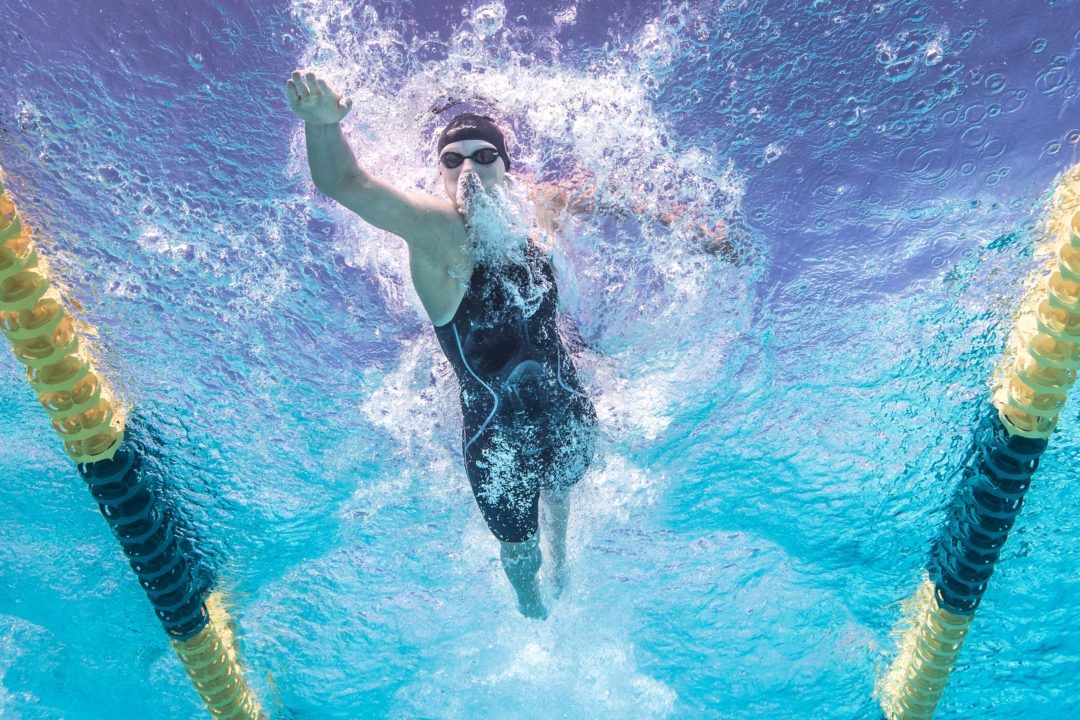FINA has released the 2017 long course points table, revised from the last edition from 2015. The tables have updated the world record performances over the last two years to be at the 1000 point mark, whereas prior to the new table recent world records have scored as high as 1071 on the 2015 scale (Adam Peaty‘s 100 breast).
The short course and long course tables update on alternating years, just as the short course and long course World Championships take place on alternating years. The short course table updated last year.
The points table is used worldwide by swimmers, coaches and fans alike to rank swims, set time standards and gauge performances. The events affected by the new table are all of those that have seen world record performances over the last two years.
Below, all the world records that have been broken since the 2015 table was released are listed, with the record-breaker and the number of FINA points their swim scored on the 2015 table.
- Men’s 100 Back, Ryan Murphy, 51.85 (1005)
- Men’s 50 Breast, Adam Peaty, 26.42 (1028)
- Men’s 100 Breast, Adam Peaty, 57.13 (1071)
- Women’s 400 Free, Katie Ledecky, 3:56.46 (1024)
- Women’s 800 Free, Katie Ledecky, 8:04.79 (1038)
- Women’s 1500 Free, Katie Ledecky, 15:25.48 (1009)
- Women’s 100 Fly, Sarah Sjostrom, 55.48 (1027)
- Women’s 200 IM, Katinka Hosszu, 2:06.12 (1000)
- Women’s 400 IM, Katinka Hosszu, 4:26.36 (1023)
- Women’s 400 Free Relay, Australia, 3:30.65 (1004)
* The men’s 200 breast world record was recently broken in January by Ippei Watanabe in a time of 2:06.67, the first man ever under 2:07, but the tables were created prior to that swim. His countryman Akihiro Yamaguchi‘s mark of 2:07.01 still stands as the 1000-point mark of the table, despite no longer being the world record. Watanabe’s swim scores 1008 points on the 2017 table.
As you can see, the men’s breaststroke and women’s distance free events see the most change, with the recent progress made by Adam Peaty and Katie Ledecky in their respective events. With such incredible performances from them recently, it becomes much more difficult for a swimmer to achieve X number of FINA points in those events, relative to an event with much more parity like the men’s 200 breast. However, this isn’t a new phenomenon, as the super-suited records from 2009 have been skewing the FINA points table for years.
As previously mentioned, Peaty’s 100 breast mark scored the highest in the old table at 1071, incredibly pushing the previous world record and 1000-point mark of 58.46 down to just 933 points. That performance, done by Cameron van der Burgh back at the 2012 Olympics, still has him #2 on the all-time performers list, magnifying just how far (or low) Peaty has taken the sprint breaststroke times over the last two years.
The other biggest moves came from Peaty in the 50 breast, Ledecky in the 400 and 800 free, Sarah Sjostrom in the 100 fly and Hosszu in the 400 IM. Those swims moved the old world record marks down from 1000 to 972, 976, 962, 973 and 977 points respectively.

This new chart makes the second fastest man in history’s fastest swim, which is Cameron Van Der Burghs 58.46 from london 2012, only worth 933. That amount the sam amount of points a 48.01 100 free or a 53.07 100 back gets. Puts into perspective how far ahead Peaty is of everyone else.
Peaty has taken men’s 100 breast to a completely another universe, and his last WR whatever it is, will stand for quite a while and will take its place among the legendary WRs of Mary Meagher’s 100/200 fly WRs, Kriztina Egerszegi’s 200 back WR, Janet evans’s 400/8;00/1500 WRs, Thorpe’s 400 free WR, Phelps’ 200 fly WR (the textile one), and Ledecky’s 400/800/1500 WRs.
HOWEVER, it’s a bit reckless to compare directly without much thoughts put into it to assume that the depth and competition of men 100 breast is on equal to men’s 100 free.
Let’s be honest here, they are not, and that’s not a slight against Peaty whatsoever.
This FINA point scoring has noticeable flaw: it penalizes most… Read more »
Another way to view into it:
men’s 100 breast is a much less competitive event than men’s 100 free.
The points are calculated using a cubic curve. With the swim time (T) and the base time (B) in seconds the points (P) are calculated with the following formula: P = 1000 * ( B / T )3
Does anybody know why it is this way and if anything scientific stands behind such approach. It obviously behaves differently with small Ts (short distances) and large ones (long distances)
Without the cubing near the WR a difference of 0.1% would correspond to a difference of 1 point. With the cubing it would correspond to a difference of 3 points. Cubing allows finer distinctions near the WR while still keeping 1000 as the base.
I’m wondering if it make sense to define prize purse of FINA’s meets based on the strengths of the meet and quality of results shown. Points table can he used to make quantitative measure of Quality.
How do they calculate these